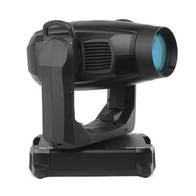Products
The evergreen Rick Astley recently completed a tour of the UK’s arenas and theatres to support his latest album, Beautiful Life. And although the album featured 12 new tracks, written by the artist, it was his alluring catalogue of soul, rock, R ‘n’ B and dance classics that the audience had largely come to hear.
The stage/production lighting design was imaginatively conceived by the highly experienced Andy Hurst, and brought to life by a rich toolbox of effects, many of them from the extensive portfolio of Martin by HARMAN, distributed in the UK by Sound Technology Ltd.
The LD had originally championed the VDO Sceptron 10 LED high-resolution batten (with 10mm pixel pitch) when he first used it with Faithless towards the end of 2015. To underline that commitment HSL, the Blackburn-based rental company, had been equal to the designer’s demands, adding 300 to their stock.
HSL also supplied inventory for Rick Astley. Working with production manager Tony Gittins, HSL project manager Jordan Hanson confirmed the ongoing popularity of this fixture: “We now see it quite regularly appearing on riders and specs,” he stated.
However, it was 48 of Martin’s MAC Viper Profiles – six adorning each of the eight 6- metre trusses, that made up the mother grid. It was to fill the spaces between each truss that nine Sceptrons were positioned, in three banks of three, which made up the grid lines and provided a bright, individually pixel mapped source which could be used for complex and fluid chases and flow effects. Andy Hurst observed that the Sceptrons also took ambient uplight coming from the floor really well, creating a set effect when not in use.
Available in 320mm and 1000mm lengths, the VDO Sceptron 10s were controlled by Martin’s proprietary P3 engine, for easy configuration, mapping and setup, under master DMX control from a Whole Hog Full Boar console, piloted by Mark Jones- Roberts.

Photos: (c) Louise Stickland, courtesy HSL
Hurst then turned to side booms to achieve efficient cross lighting and colouration onto the band—positioned upstage on risers and the floor— and for this he used six MAC Auras on three booms a side, along with some MAC Viper Performance framing fixtures at floor level.
In total he used 13 of the Vipers—four each side and five along the back wall—and these were chosen specifically for their power and accurate shuttering. The beams were all brought to life by a combination of hazers and low-lying fog, with a full video package providing the rest of the dynamics.
December 2018
Venue
- Rick Astley 'Beautiful Life' UK Tour
- UK Arenas / Theatres
Project Team
- Lighting Designer: Andy Hurst
- Production Manager: Tony Gittins - HSL
- Project Manager: Jordan Hanson - HSL










